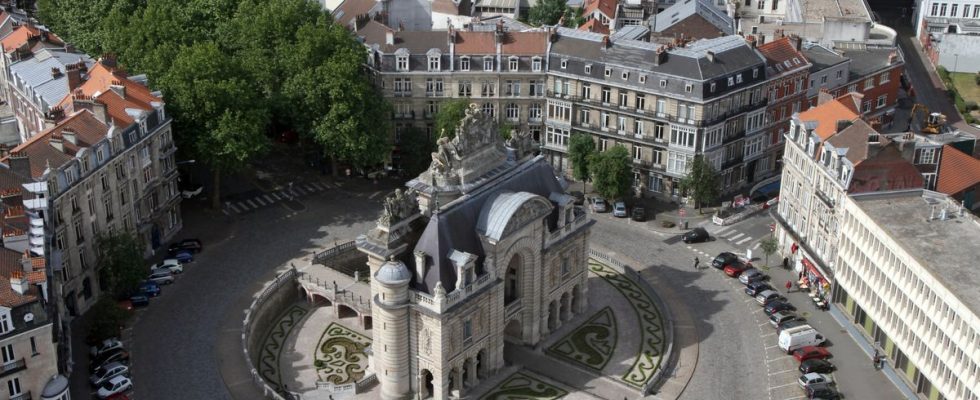The starting point for all the events, the Porte de Paris is undoubtedly one of Lille’s most remarkable monuments. It sits majestically on Place Simon Vollant, named after its designer, a few meters from the town hall. And if its architecture from the end of the 17th century leaves amazed tourists speechless, there is still something wrong. Indeed, unlike its Parisian counterpart, the Arc de Triomphe Lille is not aligned with any street. A blunder of the architect of the time? Spoiler: no.
It is by admiring the Porte de Paris from the top of the belfry of the town hall of Lille that the observation is obvious: the arches of this monument have no other perspective than the facades of the buildings surrounding the place Simon Vollant. From below, by placing yourself in the center of the door, the gaze does not find the same freedom as that of Parisians, who have, on either side of the Arc de Triomphe, the avenues of the Grande Armée and from the Champs Elysee. And this comparison is the first error on our part: “In Paris, if the Arc de Triomphe overlooks specific streets, it is because it was built for that, and the streets too”, explains Jean-Yves Mereau , specialist in the history of Lille and president of the Renaissance association of ancient Lille. “This is not the case in Lille,” he adds.
This door was never in line with anything
You have to go back far, very far in the history of Lille to find the origin of this monument. In the Middle Ages, this gate was integrated into the city walls and was then only an exit point like any other. “The Porte de Paris was born in the medieval fortification, on a medieval path that was not straight”, continues the historian. And if, already, this door was not in the axis of anything, there is a reason, military. “We didn’t necessarily line up the gates for defensive reasons. Creating a kind of chicane made it possible to slow down the progress of possible attackers, ”he explains again.
Moreover, the monument bore the name of “Porte des Malades” until the middle of the 17th century, because it overlooked the “Rue des Malades”, so named because of the presence of a leper colony. It was when Louis XIV put his nose in there that everything changed. Before the King of France conquered Lille, it was part of the Netherlands under Spanish rule. In 1667, after a siege of only ten days, the army of Louis XIV managed to enter Lille through the Porte des Malades. “It was the King of France who erected the Porte de Paris instead of the Porte des Malades to mark his taking possession of the city,” notes the historian. And the architect, Simon Vollant, followed the instructions of the sponsor, developing “a decor which expresses the power and magnificence of the Great King”, details the Lille tourist office.
At that time, the Porte de Paris was still fulfilling its function as a gate, integrated into the fortifications. She found herself isolated in the middle of a square, Place Simon Vollant, when the ramparts were destroyed in the middle of the 19th century. A change in status and the addition of a facade on the city side which gave it the appearance of the Arc de Triomphe which was not originally sought after.

